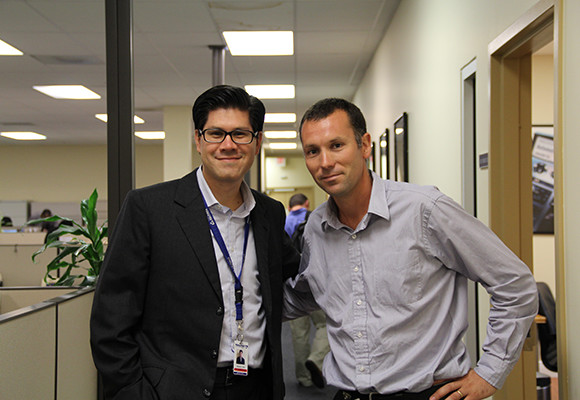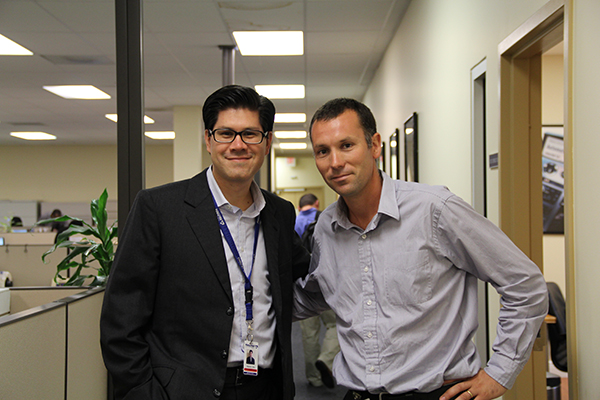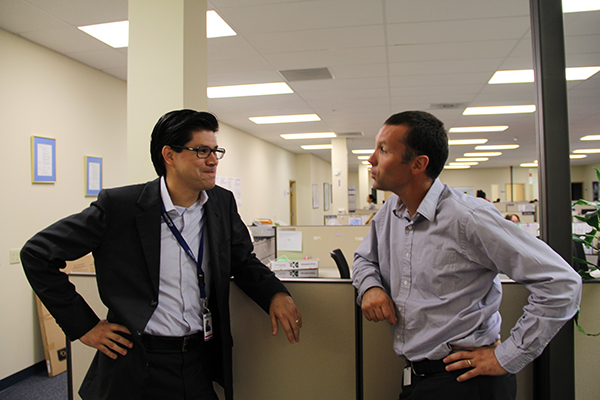In this second edition of our e-newsletter, Matias Lagos, Vice President Sales North America and Asia, talks with Alejandro Rello, VP Trade Lane Mangement at Panalpina. Alejandro started working with Panalpina 17 years ago in Mexico. In 1999 he was transferred to the United States joining the team that manages Panalpina´s flight operations between Europe, the United States, and Mexico. Since then, he has held different positions supporting one of the Company’s core products, Air Freight. He has held his current position, based in Miami, for the past 4 years when he took over the Trade Lane Management from North America to Latin America where he combines the areas of procurement responsibilities with his role as Gateway manager.
Matias Lagos (ML): During 2012 we faced many challenges. Decreased demand, additional capacity in some core markets, increasing fuel prices, I could go on. On the other hand, in the second half of the year LAN Airlines and TAM completed their association, which brought in additional challenges, but also extraordinary new opportunities. During the first quarter of this year we have not seen significant changes in market conditions overall. Can you give us your general opinion regarding the industry’s results for 2012 and any important changes you noticed during the first quarter of 2013?
Alejandro Rello (AR): The negative impact of the economy contributed greatly to a decline in air freight volumes. However, we have seen changes already with a steady increase of demand in volumes in Asia. On the other hand, despite some carriers scaling back on freighter operations, we are still seeing over-capacity directly generated by passenger routes with equipment upgrades, specifically B777.
ML: We would obviously like to see an increase in demand during 2013, and even though we have perceived slight improvements in some markets, we still do not see a trend. What do you think will be different during 2013 in comparison to 2012?
AR: We don’t expect a big change on the market conditions from those we faced last year. The improved outlook still heavily depends on Eurozone development. Not too long ago we saw signs of recovery that proved to be false starts. Business confidence is improving, however market volatility calls for moderate expectations. Over-capacity will remain on the short term.
ML: And what changes, if any, has Panalpina implemented for 2013 in consideration of 2012 results?
AR: We have shifted our internal resources by realigning with our customer’s needs. To that end, we have set up regional centers in order to leverage our product capabilities and fully capitalize on our expertise in key industry verticals. PANALPINA started an Operational Transformation that will better allow us to react to changing market requirements. This involves a best in class global IT platform that will increase productivity in our core business processes. If we go into specifics in Latin America, we have made investments in logistics facilities during 2012 in order to properly position this region to take advantage of the business opportunities we are pursuing this year.
ML: That’s very interesting. It also seems aligned with some changes that LAN CARGO has implemented in different organizational areas and in some of the countries where we operate, such as new and/or upgraded cooler facilities, the implementation of an Exception Management System (i.e, new teams, processes and CRM software, among others), introduction of new technological tools, etc. Which will be the main challenges for Panalpina in the south-bound market to Latin America this year?
AR: Regional dependency on slowing economies and the volatility it creates on the air freight industry are some of the main factors to consider. The risk of GDP falling below expectations and the restrictive import and trade policies that some countries implement could have a major impact on our business activity this year.
ML: And what do you think will be Miami´s role as a hub for cargo moving to Latin America in the medium and long-term?
AR: A robust regional market attracts more capacity, including surplus lift from other parts of the world. Leading air cargo carriers in MIA face a capacity trend that outpaces traffic growth. Increased competition from Middle Eastern air cargo carriers has reduced the volume of Asia-made products transshipped to Latin America through Miami. On the other hand, belly capacity, new route development and oil price volatility already challenge Miami’s role as leading gateway for transcontinental traffics. For the future, Miami has to re-evaluate the long term benefits of service features. For us it means that we will have to be more specific on our service offering, closely monitor our productivity and keep the focus on a highly reliable service.
ML: And under this scenario, what is LAN CARGO and its affiliates, including TAM Cargo´s role within Panalpina´s strategy for 2013?
AR: Considering the challenges already mentioned and the positioning of our Miami operation within PANALPINA’s network, the cooperation with strategic partners like LAN CARGO and TAM CARGO becomes more critical. Our value proposition is heavily supported by the interaction between forwarder-airline during the service encounter. For 2013 we have specific quality and productivity goals, and we consider a competitive advantage the partnership between LAN and TAM, which fosters our service differentiation.
ML: Besides being a very important air cargo hub, Miami is nicknamed the “Capital of Latin America”. How do you like living here?
AR: I really enjoy living in Miami and my family likes it very much too. The city offers a nice blend of cultural opportunities, sports events and outdoors activities. I guess the diversity of Miami, together with the weather, is the most appealing aspects I appreciate of living here.
ML: I completely agree with you. And I would add the vast array of international and local cuisine. Can you find authentic Mexican cuisine in Miami? Do you recommend any restaurants in particular?
AR: It took me some time to find them, but there are some places that offer a menu very close of the taste you can get in Mexico. Talavera in Coral Gables and Mercadito in Midtown Miami are the ones that come to mind. The latter even has a Taqueria my kids love. We should plan to try Mexican one of these days…
ML: That sounds great. Mexican food is one of my favorites. In your opinion, which places in Miami cannot be missed by visitors?
AR: When we get visitors at home, we usually suggest going to the Fairchild Tropical Botanic Garden that we like a lot. The Design District is certainly a place to visit where you can also find very good restaurants. If you have kids the Miami Children’s Museum is an ideal option for the little ones. For those who like to run, a run at dawn in South Beach or by Key Biscayne Bridge is something I enjoy and recommend. Last but not least the Spanish Monastery in North Miami Beach is a beautiful piece of ancient architecture in the middle of Miami. This is an exceptional tranquil place, a tourist attraction with no tourists!




